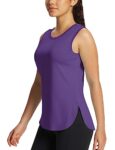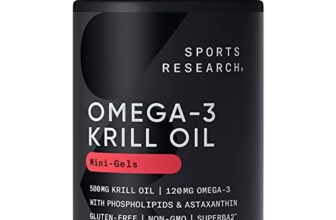
How to Pick the Right Shoes for Your Fitness Activities
This step-by-step guide provides a comprehensive approach to choosing the perfect shoes for your fitness activities. It highlights the importance of selecting the right shoes for different types of exercises and offers practical tips on how to do so. By following this guide, you can ensure that you have the appropriate footwear to enhance your performance and protect yourself from potential injuries.
Top Selling Fitness Gear
Assess Your Activity
To assess your activity, begin by examining the type of fitness activity you participate in. Determine if it involves high impact movements such as running, jumping, or quick lateral movements. Alternatively, consider if it is a low impact activity like yoga or weightlifting. This step will help you understand the level of intensity and impact your body experiences during the exercise.
Understand Your Foot Type
To determine your foot type, follow these steps:
- Wet your feet and step onto a piece of paper or cardboard.
- Look at the shape of your footprint. If it looks like a complete imprint with no curve inward, you likely have flat feet. If the imprint shows a distinct curve inward at the arch, you have high arches. If the imprint shows a moderate inward curve, you have neutral or normal arches.
- Alternatively, you can also visit a podiatrist or a shoe store that offers foot analysis services to get a professional assessment of your foot type.
Once you have determined your foot type, you can choose the right kind of shoe support and cushioning that suits your needs. Flat-footed individuals may benefit from shoes with good arch support and stability, while those with high arches may require shoes with extra cushioning to absorb shock. Individuals with neutral arches have more flexibility in selecting shoes, but still need to consider their specific comfort and support requirements.
Know Your Pronation
Know Your Pronation
Identify your pronation, which refers to how your foot rolls inward during walking or running. Understanding your pronation type is crucial in choosing the right shoes with appropriate stability features.
To determine your pronation type, follow these steps:
- Wet the soles of your feet or use a foot scanner to create footprints on a piece of paper or cardboard.
- Examine the shape of your footprints to identify your pronation type:
- Neutral Pronation: If your footprints show a moderate inward curve, you have neutral pronation. This is considered the ideal pronation type as it provides efficient shock absorption and weight distribution.
- Overpronation: If your footprints reveal a significant inward curve, you have overpronation. Overpronators experience excessive inward rolling, which can lead to issues like knee pain and shin splints.
- Underpronation: If your footprints show a minimal inward curve or even a straight line, you have underpronation. Underpronators have insufficient inward rolling, causing the impact to be absorbed less effectively and potentially leading to foot and ankle problems.
Once you’ve identified your pronation type, make sure to choose shoes that provide the appropriate stability features:
- Neutral Pronation: Look for shoes with a good balance of cushioning and support. They should have a neutral midsole and offer flexibility.
- Overpronation: Opt for motion control or stability shoes that have an arch support feature to control the inward rolling of your foot. These shoes provide extra stability and help to align your foot properly.
- Underpronation: Choose shoes with ample cushioning to help absorb shock. Look for neutral or cushioned shoes with a curved or semi-curved last to encourage proper foot motion.
Remember, having the right footwear that caters to your pronation type will enhance your comfort, prevent injuries, and optimize your performance during walking or running.
Consider the Shoe Category
To choose the appropriate shoe category based on your activity, first consider running shoes if you primarily engage in activities that involve forward motion, such as jogging or sprinting. For example, brands like Nike Air Zoom Pegasus or Brooks Ghost are popular choices for running shoes. If you do a variety of activities, such as weightlifting, aerobics, and cycling, opt for cross-training shoes like the Reebok Nano or Nike Metcon. Finally, if your activity involves hiking or walking on uneven terrain, go for hiking shoes like the Merrell Moab or Salomon X Ultra, which provide stability and traction.
Try Different Brands and Models
Visit a specialty fitness store and try on different brands and models. Start by exploring a specialty fitness store near you and try on various brands and models of athletic shoes. Carefully evaluate how they feel on your feet, making sure they offer ample room for your toes, proper arch support, and a secure fit. Take your time to find the perfect pair that meets all your comfort and support needs.
Test for Flexibility and Cushioning
To check if the shoes offer flexibility in the forefoot, bend the shoe by holding the heel and pressing the toe area downwards. The shoe should easily flex and move with your foot, allowing for natural movement. Additionally, to test for adequate cushioning, press your thumb into the midsole of the shoe. It should feel soft and provide a good amount of resistance, indicating that it can absorb the impact of your activity effectively.
Consider Your Budget
When considering your budget for shoes, it is essential to determine how much you are willing to spend. Start by evaluating your financial situation and decide on a reasonable amount that you can allocate for footwear. Remember, it is important to invest in a quality pair of shoes, but that does not mean you have to break the bank. In order to find the right shoes within your price range, look for options that offer the necessary features without exceeding your budget.
Consult with a Professional
- Consult with a podiatrist or sports specialist: If you are experiencing foot pain, have a recurring injury, or have specific foot conditions such as bunions or plantar fasciitis, it’s best to consult with a professional. They can assess your condition and provide personalized recommendations based on their expertise.
- Schedule an appointment: Reach out to a podiatrist or sports specialist in your area and schedule an appointment. This will allow you to discuss your concerns in detail and receive professional advice tailored to your specific needs. Examples of foot conditions that may require professional consultation include Achilles tendonitis, stress fractures, and ingrown toenails.
- Provide relevant information: During your appointment, be prepared to provide the professional with information about your medical history, lifestyle, and any activities that may be contributing to your foot issues. This will enable them to better understand your situation and provide appropriate recommendations. For instance, if you are an athlete, it is important to inform the specialist about the type of sport you engage in and the frequency of your training.
- Follow the professional’s advice: After your consultation, carefully follow the recommendations provided by the podiatrist or sports specialist. This may include exercises to strengthen specific foot muscles, wearing orthotics or supportive footwear, or modifying your activities to avoid further injury. By adhering to their advice, you can improve your foot health and potentially prevent future complications.
Remember, if you have any concerns or questions about your foot health, it’s always best to consult with a professional who can provide expert guidance and personalized recommendations.
Replace When Necessary
- Monitor the wear and tear of your shoes regularly.
- Check for signs of deterioration such as holes, tears, or worn-out soles.
- Replace your shoes when you start experiencing discomfort or pain while wearing them.
- Look out for visible signs of wear such as faded color or loose stitching.
- Remember that different types of shoes may have different lifespans, so be mindful of the specific recommendations for each type.
- Keep in mind that even if your shoes still look good, they may have lost their support and cushioning, so consider replacing them if they no longer provide the comfort you need.
- It’s a good idea to have a backup pair of shoes ready, especially if you engage in activities that put extra strain on your footwear.
- By replacing your shoes when necessary, you can ensure better foot health and prevent potential injuries.
Making the right choice
In conclusion, finding the right shoes for your fitness activities is a crucial step towards optimizing your performance and reducing the risk of injuries. By considering factors such as activity type, foot type, and personal preferences, you can select the ideal pair that will provide you with comfort, support, and durability. Remember, investing time in choosing the right shoes will ultimately pay off in achieving your fitness goals and enjoying a more enjoyable and rewarding workout experience.
Choosing the perfect fit
Choosing the Right Fit
- Choose the right size: Make sure to pick fitness apparel that fits you comfortably. It should not be too tight or too loose, as this can affect your movement and performance during workouts
- Wear moisture-wicking fabrics: Look for fitness apparel made of moisture-wicking materials like polyester or nylon. These fabrics help to draw sweat away from your body, keeping you dry and comfortable during your workout
- Layer your clothing: Depending on the weather and intensity of your workout, it is a good idea to layer your fitness apparel. This allows you to adjust your clothing as you warm up or cool down. Start with a moisture-wicking base layer, add a breathable middle layer, and finish with a lightweight outer layer if needed
- Opt for comfortable footwear: Investing in a good pair of athletic shoes is crucial for beginners. Choose shoes that provide proper support and cushioning for your specific activity, whether it’s running, weightlifting, or cycling
- Don’t forget about accessories: Along with your fitness apparel, consider adding accessories such as moisture-wicking socks, a supportive sports bra (for women), a sweatband, and a hat or visor to protect yourself from the sun. These accessories can enhance your comfort and performance during workouts
Frequently Asked Questions about Fitness Apparel
What are the benefits of wearing moisture-wicking clothing during workouts?
Wearing moisture-wicking clothing during workouts provides several benefits. Firstly, these garments are designed to draw sweat away from the body and onto the surface of the fabric, allowing it to evaporate more quickly. This helps to keep the body dry and prevents the buildup of moisture, reducing the risk of discomfort and chafing.
Additionally, moisture-wicking clothing helps regulate body temperature during intense physical activity. As sweat evaporates more efficiently, it cools the body, preventing overheating and improving overall comfort. This is particularly important during workouts in hot and humid conditions.
Moreover, moisture-wicking fabrics are often lightweight and breathable, allowing air to circulate more freely. This promotes better ventilation and enhances the body’s natural cooling mechanism, further contributing to a more comfortable workout experience.
Another advantage of moisture-wicking clothing is its ability to prevent the growth of odor-causing bacteria. By wicking away sweat, which contains bacteria and other impurities, these garments help maintain freshness and reduce the unpleasant smell often associated with intense physical activity.
Finally, wearing moisture-wicking clothing can enhance performance by keeping the body dry and comfortable, allowing individuals to focus on their workout rather than being distracted by wet or clingy clothing.
















Awsome article and straight to the point. I don’t know if this is truly the best place to ask but
do you people have any thoughts on where to get some professional writers?
Thank you 🙂 Lista escape roomów
I like this weblog it’s a master piece! Glad I observed this on google.?